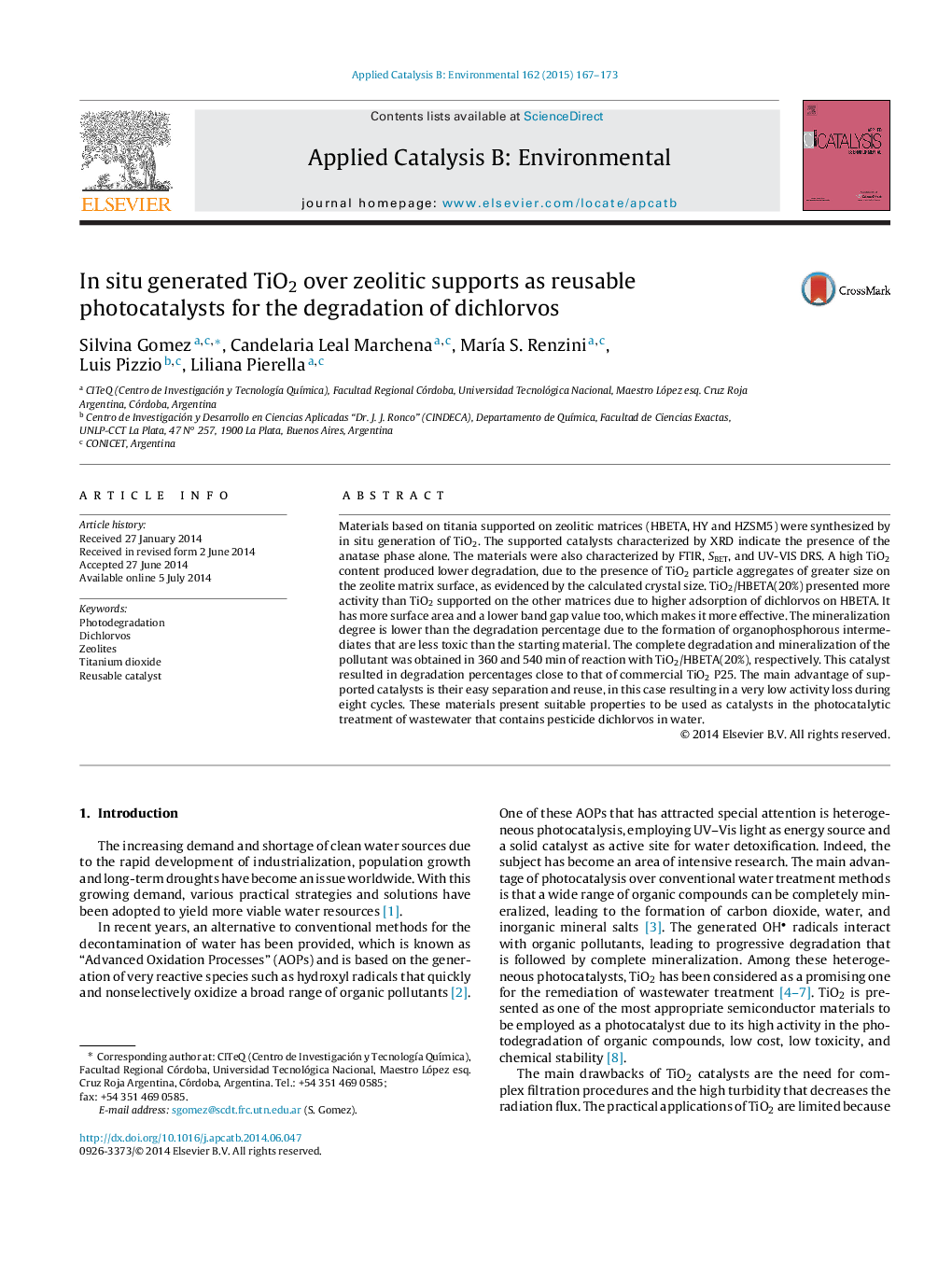| کد مقاله | کد نشریه | سال انتشار | مقاله انگلیسی | نسخه تمام متن |
|---|---|---|---|---|
| 45633 | 46418 | 2015 | 7 صفحه PDF | دانلود رایگان |

• HBETA shows better adsorption due to its greater number of acid sites.
• Zeolitic matrices are not in themselves photocatalytic.
• TiO2/HBETA(20%) showed similar performance to that of P25 for DDVP degradation.
• The catalyst can be reused at least eight cycles without noticeable activity loss.
• No leaching of titanium dioxide from the supported catalyst occurs during the reaction.
Materials based on titania supported on zeolitic matrices (HBETA, HY and HZSM5) were synthesized by in situ generation of TiO2. The supported catalysts characterized by XRD indicate the presence of the anatase phase alone. The materials were also characterized by FTIR, SBET, and UV-VIS DRS. A high TiO2 content produced lower degradation, due to the presence of TiO2 particle aggregates of greater size on the zeolite matrix surface, as evidenced by the calculated crystal size. TiO2/HBETA(20%) presented more activity than TiO2 supported on the other matrices due to higher adsorption of dichlorvos on HBETA. It has more surface area and a lower band gap value too, which makes it more effective. The mineralization degree is lower than the degradation percentage due to the formation of organophosphorous intermediates that are less toxic than the starting material. The complete degradation and mineralization of the pollutant was obtained in 360 and 540 min of reaction with TiO2/HBETA(20%), respectively. This catalyst resulted in degradation percentages close to that of commercial TiO2 P25. The main advantage of supported catalysts is their easy separation and reuse, in this case resulting in a very low activity loss during eight cycles. These materials present suitable properties to be used as catalysts in the photocatalytic treatment of wastewater that contains pesticide dichlorvos in water.
Figure optionsDownload as PowerPoint slide
Journal: Applied Catalysis B: Environmental - Volume 162, January 2015, Pages 167–173